The Weekend Australian reported that Treasurer Jim Chalmers told the nation’s corporate leaders that Australia’s economy is “not productive enough, not competitive and not dynamic enough” and that this situation is “not acceptable to me or to the government that Anthony Albanese leads”.
“That’s why we are putting in place new foundations for growth”, Chalmers said.
Really Jim? Australia is experiencing an oligopolistic inflation shock. There is no competition policy to fix it—literally nothing.
Instead, ever-increasing subsidies are deployed to hide the lack of competition and shift inflation from the CPI to the tax system.
Labor’s “cheap and clean” energy is a myth. Australians are paying higher energy prices than most of our gas export customers, which is working to kill what little competitiveness and manufacturing Australia has left.
The failure to reserve East Coast gas for domestic use, which began under the former Labor Rudd-Gillard government, has led to shortages and high prices, despite the fact that around 70% of this gas is exported, mainly to China.
The situation is so absurd that gas import terminals are being actively considered to supply New South Wales and Victoria with gas.
The gas shortage has also extended the life of coal-fired power stations, funded with taxpayer subsidies.
The solution to the East Coast energy crisis is so obvious that it is staring Jim Chalmers in the face: copy Western Australia and reserve 15% of our export gas for domestic use.
That would solve most of Australia’s energy problems with a pen stroke. We would have ample gas for domestic use.
Next we have Labor’s productivity-destroying extreme immigration policy, which is off the charts:

High net overseas migration has increased Australia’s population by 8.2 million people (44%) this century alone.
However, business investment, infrastructure investment, and housing have not kept pace.

As a result, capital stock per worker has fallen, resulting in “capital shallowing” and reduced productivity.
Congestion costs have also increased as infrastructure has become increasingly overburdened, further limiting productivity and output.
This “capital shallowing” was stunningly illustrated in the next chart by independent economist Gerard Minack in his November report:

“Australia’s economic performance in the decade before the pandemic was, on many measures, the worst in 60 years”, Minack wrote.
“Per capita GDP growth was low, productivity growth tepid, real wages were stagnant, and housing increasingly unaffordable. There were many reasons for the mess, but the most important was a giant capital-to-labour switch: Australia relied on increasing labour supply, rather than increasing investment, to drive growth”.
“Australia’s population-led growth model was a demonstrable failure in the 15 years prior to the pandemic. Remarkably, the country now seems to be doubling down on the same strategy. The result, unsurprisingly, is likely to be more of the same”, Minack warned.
Data from Labor’s Migration Review showed that 51% of international student graduates with a bachelor’s degree still in Australia after three years are working in low-skilled Level 4 or Level 5 jobs:
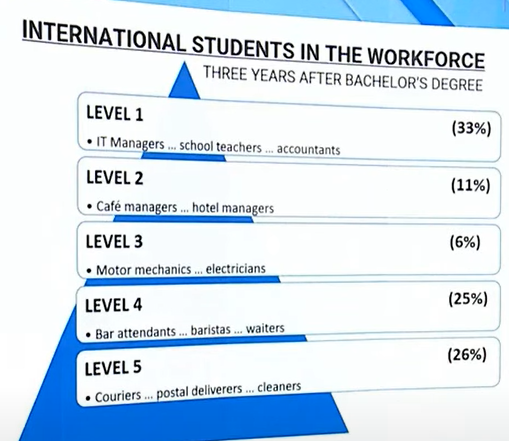
Source: Tom Connell, pulled from the Migration Review
These findings are corroborated by the latest Graduate Outcomes Survey (GOS), which shows that international graduates have far lower employment rates, participation rates, and median earnings than domestic graduates:
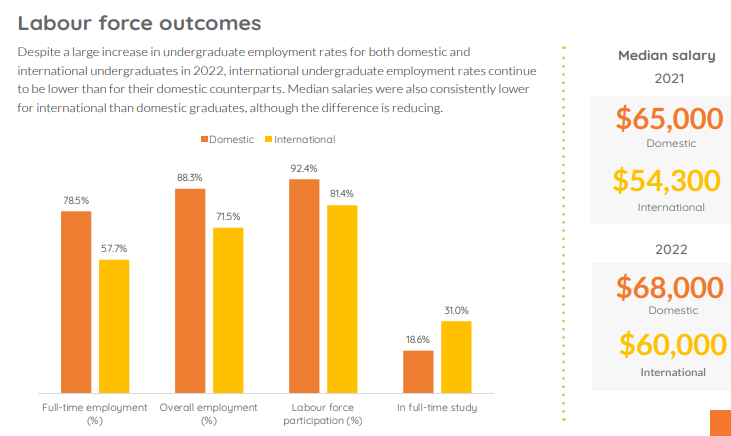
Source: Graduate Outcomes Survey
In a similar vein, new research from the Committee of Economic Development Australia (CEDA) showed that migrants earn significantly less than Australian-born workers, and many work in jobs that are beneath their skill level.
CEDA showed that migrants who have been in Australia for two to six years earn more than 10% less than Australian-born workers on average.
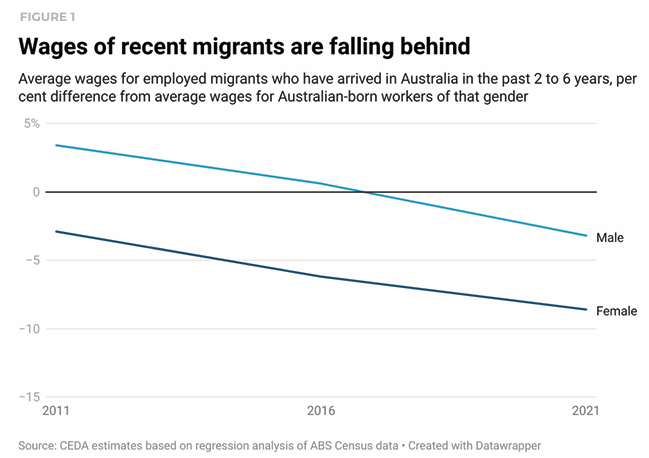
CEDA also suggested that the migration system is dragging down Australia’s productivity.
“Labour productivity and wages are closely linked, indicating that migrant labour is not being used as productively as it could be”, the report says.
“This decade, migrants have become increasingly likely to work in lower productivity firms”.
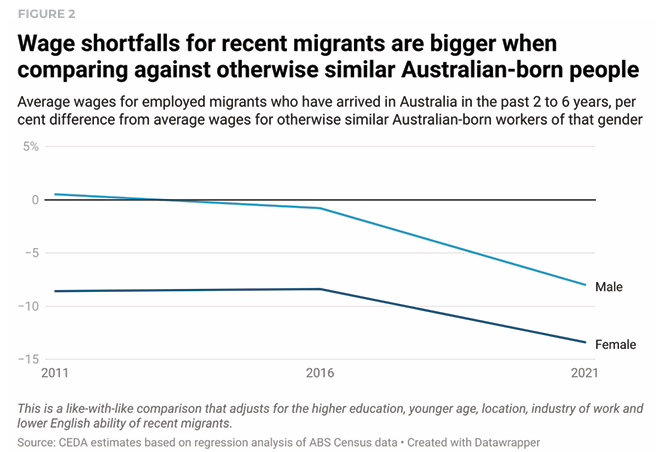
CEDA also showed that the unemployment rates of recent skilled migrants are higher than those of Australian-born workers:
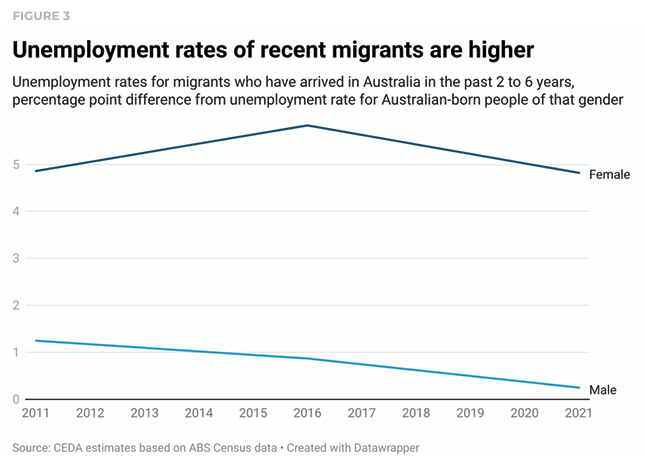
Migrants are also far less likely to work in professional or managerial jobs:

Meanwhile, Australian housing and infrastructure continue to be crush-loaded by the endless migrant flood, forcing Australians into severe rental stress, group housing, or homelessness.
While productivity-destroying mass immigration has been a feature of both sides and is also wholeheartedly supported by the Greens, the fact remains that the Albanese government has doubled-down with unprecedented migration volumes.
In turn, Labor has set Australia on the path of further capital shallowing, crush-loading, lower productivity, wage growth stagnation, and overall lower living standards.

